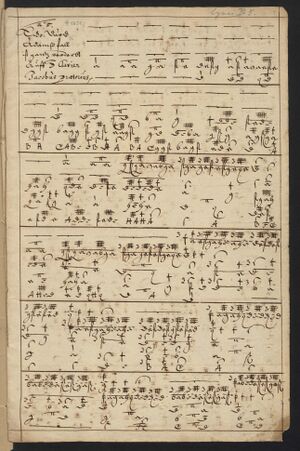New German Tablature Notation

"New German Tablature" (de: Buchstabentabulatur) is a notation style used by north-German organists from around the late 16th-mid 18th centuries.
New German Tablature Notation is basically identical to the letter notation of Old German Tablature Notation.
This article is a stub, you can help expand it with more information and citations!
Notation
Music written in New German Tablature Notation is written in an "open-score" format in which the voices is written above and below each other with no concept of combining voices on separate staves.
The letters are written in what is now called Helmholtz Pitch Notation using B and H for (in english) B-Flat and B-Natural. The bass octave is written in capital letters, the tenor in lowercase, and subsequent octaves written with different number of horizontal lines above the letter.

For accidentals, the sharp is virtually always used instead of the flat equivalent (even when it is enharmonically incorrect) except for B-Flat which is written B.

A down-right stroke (representing -is) is appended to the letter.
Virtually all manuscripts in New German Tablature Notation write each system across both pages, unlike modern staff notation where each system goes across one page only.
References
Willi Apel. The Notation of Polyphonic Music. Fifth Edition. Cambridge, MA: The Mediaeval Academy of America, 1953. Reprinted 1961. 21-37.